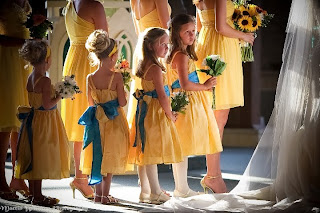What is Depth of Field (DOF)?
According to Dictionary.com DOF is,
“the range of distances along the axis of an optical instrument, usually a camera lens, through which an object will produce a relatively distinct image.” 1
Viewing both almost identical images you can see a demonstration of two very different DOFs. In the top image, moving left to right, you can see that most of the planks in the fence are relatively sharp and in focus throughout the photo. This would be considered a large DOF. In the bottom image only the very center of the image appears to be in focus. The fence planks to the left and right of center are out of focus, creating a shallow DOF. Each image is also labeled with it's respective aperture (f-stop).

In not-so-technical terms DOF is everything that is considered to be “in-focus” or sharp in a captured image or photograph. Consider the two black & white images below...
So what’s going on inside the camera and lens to create these two separate images?
First, we need to quickly understand what aperture means. Without going off on a technical tangent here we know that as a rule of thumb, aperture is determined by how wide the iris of the camera lens opens when the shutter button is pressed (see black and white figure below). Larger apertures (think larger opening, more light) create shallower depths of field; inversely, smaller apertures (think smaller opening, less light) create deeper depths of field. A large aperture where the iris is open very wide might be f-1.2 or f-1.4. An example of a very small aperture might be f-222.
The primary difference between these two wood fence images is the aperture (f-stop) at which the camera lens is set. Even if we didn’t have the metadata at our fingertips that would tell us the exact aperture that was selected for each photo, we could still hypothesize that the top image was captured at a small aperture (small f-stop), perhaps f-11 or f-15. The bottom image was likely captured at a large aperture (large f-stop), perhaps f-2.0.
Predicting DOF. DOF can be calculated based on three primary factors (and one secondary factor): focal length of lens (50 mm, for example), aperture or f-stop (f 2.0, for example) and subject distance (distance between camera lens and subject). The secondary factor affecting DOF is your camera; different digital cameras have different sensors and components which affect DOF. If you would like to calculate DOF for your camera and lens combination you can easily do so by imputing the three primary factors mentioned above here on the fantastic online DOF calculator graciously provided by Don Fleming of Dofmaster.com3.
Using Don’s DOF calculator I compared two of my favorite lens/camera combinations: the Canon 5D Mark ii + 50 mm prime lens with the Canon 40D + 50 mm prime lens. The factors I used were 50 mm focal length, 2.0 f-stop and 10 ft subject distance. The results:
Canon Camera
| Lens Focal Length (mm)
| F-Stop (Aperture)
| Subject Distance (ft)
| Calculated Depth of Field (ft)
|
5D Mark ii
| 50
| 2.0
| 10
| 1.45
|
Canon 40D
| 50
| 2.0
| 10
| 0.91
|
The differences in DOF from these two examples are significant: 0.14 (ft) [1.45 – 0.91 = 0.14 ft], which is approximately 6-7 inches in difference. I’d rather not cover too much detail here on why and how this works, primarily because I don’t pretend to be an expert in how camera sensors work or in mathematics. For the purposes of this article you only need to know that every digital camera is different and it might be worthwhile for you to bookmark the DOF calculator link for future reference.
So why do we care about DOF?
DOF and blurring created in any image is subjective and will vary from one photographer to another. Where art and science collide there can be no one rule that is never broken. In many cases photographers simply photograph a subject or event in a way that they choose to interpret it, regardless of whether another person may like the image that is captured. My rule (in general) is for the foreground to be in focus and background to blur. However there are always exceptions and the rule of universal appeal supersedes everything else; Can I answer “yes” to the question, “does the image have a general appeal about it and is it pleasing to view? Hopefully so.
1. Modern Language Association (MLA): "depth of field." Dictionary.com Unabridged. Random House, Inc. 14 Oct. 2009. http://dictionary.reference.com/browse/depth of field>.


















































